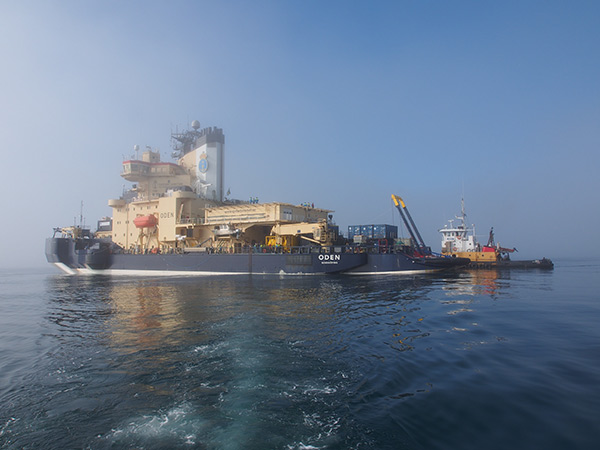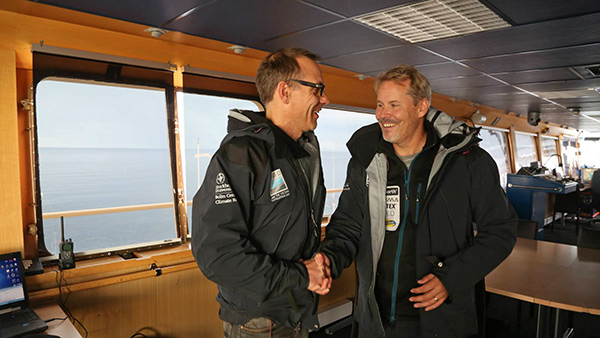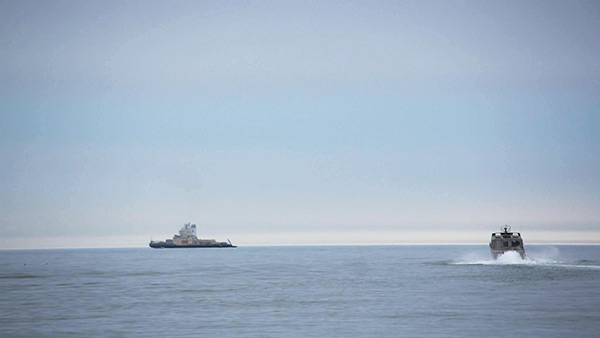Half time for the Polar expedition SWERUS-C3
|
The first leg of the International Polar research expedition SWERUS-C3 is approaching its end. In the beginning of next week, the expedition is expected in Barrow, Alaska to change researchers and crew. The second leg with the theme “From warmer seas and shrinking sea ice to greenhouse gas emissions” will then begin. The icebreaker Oden left Tromsö in Norway on July 5 and has been traveling along the Russian Arctic coast. The first leg had the theme “From permafrost thawing to the venting of greenhouse gases”. A successfull first leg– We are satisfied that all research programmes onboard the Oden during the first leg have been achieved. We have covered a large new area of the Arctic and conducted 67 large sampling stations. We wish Leg two fore winds and moderate ice, says Örjan Gustafson, Professor at the Department of Applied Environmental Science, Stockholm University. The theme for leg 2The second leg, which starts from Barrow, is led by Martin Jakobsson, Professor at the Department for Geological Sciences (IGV), Stockholm University. The theme for leg two is “From warmer seas and shrinking sea ice to greenhouse gas emissions”. The route back to Scandinavia will pass over the underwater Lomonosov Ridge. The expedition is expected to be back in Tromsö on October 4.– The history of the sea ice is one of the main issues. We will now continue the programme by bringing up long sediment cores to study the longer time perspective, Martin Jakobsson says. – The Arctic conditions are always a challenge when sampling. We will carry out geophysical surveys to study permafrost in the shallow shelf and the presence of gas hydrates along the slopes toward the deep part of the Arctic Ocean, Martin Jakobsson continues. Swedish Polar Research Secretariats director Björn Dahlbäck says: – After all the preparation and all joint planning, it’s fun to see how well everything has worked out during the first leg – both with the research and the operative work. I look forward to following the work on the second leg.
by John Sjöstrand, Web administrator, communications office, Stockholm University (http://www.su.se/english/research/leading-research-areas/science/half-time-for-the-polar-expedition-swerus-c3-1.199887)

Learn more about SWERUS-C3Expedition website: www.su.se/swerusc3 |
















